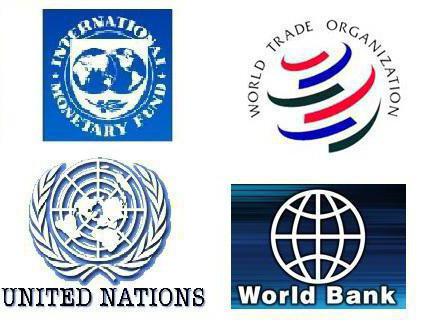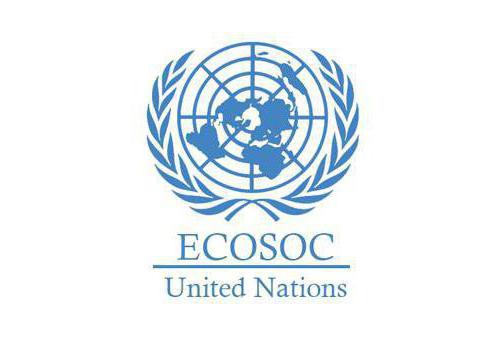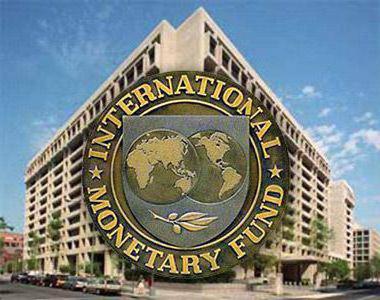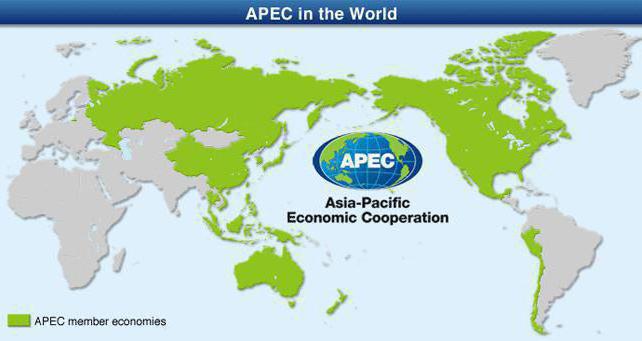In today's world, international economic organizations are structures that are designed to deepen cooperation between different countries in the field of trade and other areas of the economy. They can be both worldwide and regional. The importance of these structures in the light of the general trend of globalization is constantly growing. Let's find out what international economic and financial organizations currently exist, as well as their main goals and directions of activity.

System of Economic Organizations
Currently, there is a rather extensive system of international economic organizations. These structures actively interact with each other, affecting both the global economy and politics.
International economic organizations are associations of states or their individual governing bodies aimed at cooperation in the field of trade, finance and economic activity.
These structures can be classified on the basis of various signs of their activity. According to territorial coverage, international economic organizations are divided into global and regional. An example of a world organization is the International Chamber of Commerce, and a regional one is ASEAN (Southeast Asia).
According to the direction of activity, there is a breakdown into universal and specialized associations. The first ones cover almost all areas economic activity and the second - certain areas and directions of the economy. Thus, the World Trade Organization belongs to the universal ones, and OPEC to the specialized ones, whose activity is concentrated on the issue of oil export. Separately, financial structures should be singled out, the most famous example of which is the IMF.
The whole set of economic organizations, interacting with each other, forms an international system.
The main goals of international economic organizations are to promote the development of the economies of their members, as well as the unification of general norms for regulating relations. The decisions of some of them are binding on members, while others are advisory.
Next, we will consider the most famous international economic organizations.
ECOSOC - UN Specialized Unit
One of the main bodies of UN activities in the field of economics is ECOSOC. This structure was founded back in 1945, and its headquarters is located in New York.
The main objective of the organization is cooperation in the economic and social sphere between UN members. Its main functions are to ensure the growth of the world economy, to help reduce unemployment and reduce poverty, to solve humanitarian problems. The structure also includes education and human rights.

This body is not only a coordinating, but also a controlling association. ECOSOC controls the activities of fourteen UN entities. In addition, within the framework of this organization, representatives of the participating countries discuss the most pressing issues of the global economy.
ECOSOC includes 54 countries, which are elected for three years at the UN General Assembly. All decisions are made by a simple majority vote.
Economic Commission for Europe
Another UN structural body is the ECE. This organization is regional and subordinate to ECOSOC. The United Nations Economic Commission for Europe was established in 1947.
The main goal of this structure is the interaction in the economic sphere between the states of Europe. But, despite this, the number of 56 ECE members includes not only European states. But also some other countries of the world, for example, the USA and Canada.
The administration of the organization is located in the Swiss city of Geneva.
Trade Organization WTO
One of the largest global economic associations is the World Trade Organization. This structure began its activities in early 1995.

Its main task is to overcome customs barriers and spread the principles of free competition throughout the world. WTO bodies monitor the implementation of all provisions of the organization by member countries.
Currently, the WTO consists of 162 countries (including Russia), that is, most of the countries of the world. States such as Sudan, Algeria, Libya, Ethiopia, Iran, Iraq, Syria have observer status.
OPEC - Organization of Oil Exporters
One of the most famous international specialized economic organizations is OPEC. The scope of this structure is the regulation of oil production and export among its members.

OPEC began its activities since 1961. The organization currently has 13 countries. The most significant of them in terms of reserves, production and export of oil at the moment is Saudi Arabia.
The goal of OPEC is to control the level of world oil production in order to maintain prices for black gold within the limits that satisfy the members of the association.
IMF - an international financial institution
The largest global financial institution is the International Monetary Fund. It is also considered one of the UN structures.

The first steps towards the creation of this organization were taken during World War II, in the summer of 1944. Then the so-called IMF charter was signed, the principles of which formed the basis of the future organization. The IMF was established at the end of 1945, but only began to function in fact since March 1947. Currently, 188 countries are members of the IMF.
The main objective of the organization is lending to its members at relatively low interest rates, as well as regulating the international financial market. The IMF has the right to set certain conditions for borrowing countries, which they must adhere to in order to obtain a loan. In addition, the organization’s tasks include controlling exchange rates, collecting statistical information, providing advisory services, and facilitating trade expansion.
The governing body is the Governing Council. Each country has the right to vote in it according to the volume of its financial participation in the IMF. At the moment, the United States has the most votes.
The World Bank
Another important international financial institution is the World Bank. Its main goals include stimulation by investing in the economies of developing countries. He also provides them with technical assistance. In addition, the tasks of this banking structure include eliminating poverty as a phenomenon in the least developed countries of the world, preventing the possibility of starvation, combating disease, and many other issues of an economic and humanitarian nature.
The World Bank was founded back in 1945. Currently, 188 countries of the world are members of this largest international financial organization. Now the World Bank consists of two main structural parts: the Bank for Reconstruction and Development, and the Development Association.
ASEAN - Southeast Asia Economic Organization
One of the most illustrative examples of a regional international organization is ASEAN. It unites 10 countries of Southeast Asia. The date of formation of the association is 1967.
The task of ASEAN is to expand cooperation between countries with the goal of creating a zone of economic prosperity in the South Asian region. An increase in the share of the states of the region in the total world production indicates that the organization is moving in the right direction.
EBRD - European Investment Bank
The largest European interstate financial organization is the EBRD. This is a banking type structure created in 1991 with the aim of creating an effective mechanism of targeted investments. During its existence, the EBRD has been involved in financing many important projects.

Currently, 61 countries are participating in the activities of this largest financial institution.
APEC - Organization of the Asia-Pacific Region
One of the largest regional international organizations is APEC. Today, its members are 21 countries of the Asia-Pacific region, including Russia, the USA, and China.
The main objective of the organization is to increase the rate of economic development of its members, which is planned to be done by liberalizing the movement of capital from one country in the region to another.

The importance of this organization, not only regionally, but also globally, is underlined by the fact that the countries included in it are inhabited by 40% of the world's inhabitants, and 54% of world GDP is formed in them.
The Importance of International Economic Organizations
It is difficult to overestimate the role of international economic organizations in the global economy and financial activities. They contribute to the mutual integration of countries, as well as the intensification of their economic development. The activities of international economic organizations are aimed at eliminating customs and other borders between states, which favorably affects the freedom of movement of capital and trade.
Unlike universal organizations, specialized associations often defend their narrow-profile interests, sometimes even to the detriment of the general economic development of the countries of the world. Regional organizations primarily achieve economic prosperity in a particular region of the globe, but their actions indirectly often favor the growth of the global economy as a whole.
The value of international financial organizations is also very great. They stimulate the economies of member countries by injecting additional capital into them.
Thus, economic organizations are a very important element of modern international relations.

